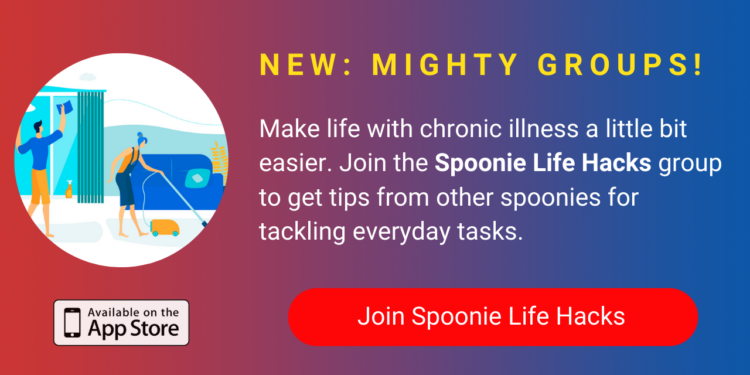November 20, 2019 was the beginning of the best, but also the worst, five weeks of my life. On that day, I was diagnosed with amplified musculoskeletal pain syndrome. Basically, I spend all day, every day, with my whole body engulfed in burning pain. For about five months, I had been misdiagnosed, misheard and dismissed by doctors, I had been written off by my teachers because I couldn’t function well enough to go to school and I had to stop working as a lifeguard and swim lessons instructor. I had become invisible.
To understand how bad this pain is, let’s go back to the beginning of the school year, when everything first started. I’m a competitive swimmer, so for the first three months of the school year, I spend at least three hours a day at the pool. Not to toot my own horn or anything, but I’m a pretty good swimmer. I’ve been doing it since I was 7, and there’s a profound joy to pushing yourself past your limit every day. My coach is fairly young, good looking and fresh out of college, and when I started complaining of back pain, he didn’t think much of it. I was just sore, he said. But one day, during one of the first competitions of the season, the pain got so bad that I couldn’t walk. I collapsed on the pool deck, in a puddle of my own tears and wept because all I wanted to do was swim, but all swimming did was hurt. I had to quit. I never heard from the coach, I never heard from the girls. I was invisible.
During all of this, it was also marching band season. I played the alto saxophone, and I was one of the leaders of the section. Since fifth grade I had loved the sweet melodies the golden instrument made, and I knew that it was for me. Our marching show for that year was called “Spanish Images,” and it was a fun Latin themed show. I marched for the first week or two of our rehearsals, but then I started complaining of back pain, and I couldn’t march anymore, because it just hurt so bad. The band director was not pleased with me, to say the least. He made snide comments, he openly made fun of me in front of the entire band, and he made it nearly impossible for me to keep a good grade in his class. One day after school, when no one else was in the band room, he looked at me straight in the eye and said that everyone knew I was faking it. Everyone knew there was really nothing wrong with me. At that moment, I knew I had yet again become invisible. So I sat on the sidelines watching his body flail around, dreaming of his arms snapping like toothpicks and laughing to myself.
This is when I started missing school and taking weekly trips to the local emergency room. Eventually, I was on a first name basis with Brad, the doctor I almost always saw. Brad would make jokes, he always had a smile on his face, and he was always as gentle as possible, because it hurt when people touched me. The crease between my forearm and bicep was soon a tie dye of black, purple and green bruises dancing across my arm, the phlebotomists cringing when I would roll up my sleeve, finding that there was nowhere for their needle to go that wasn’t already bruised. The tests all came back clean, no one could figure anything out. It was like a sick leapfrog game of pain up my spine, but no one besides me could see it.
Everyone thought it was all in my head. I wasn’t “crazy.” Was I?
MRI’s, X-Rays, ultrasounds, EKG’s, urine samples, saliva swabs, blood tests. Those aren’t even all of the tests that they ran on me. Specialist after specialist stumped by my case, in all their years they had never seen anyone quite like me. Pain for no apparent reason, sensitivity to touch, increased anxiety, decreased motor skills. The white lab coats and blue latex handed people began to write me off, and “tell me where it hurts,” turned into “justify why it hurts.” All my tests were coming back clean, people were starting to think that I was making all of this up, even though I wasn’t.
Finally, an acquaintance of mine reached out to me. She said she had had the exact same symptoms of me, and told me of amplified musculoskeletal pain syndrome. This girl was like an angel coming down from the heavens. Someone believed me, someone believed me! So we inquired at my next doctor’s appointment about this AMPS thing. Through Children’s Hospital, we found a specialist that was about 45 minutes away. Dr. Manning.
Dr. Manning is unlike any person I have ever met. He’s smart, he’s kind and he’s calm. He believed me when I told him about my pain, and he said he knew how to make it better. At the end of November, with a team of two physical therapists, two occupational therapists, one psychologist, one therapist and one physician, I entered a five week intensive outpatient therapy program. For two to three hours a day, I did intense cardio. I don’t mean a couple pushups and sit-ups, I mean intense. Riding up to five miles on a stationary bike, running up to five miles on an elevated treadmill, lifting weights, doing circuits and doing things that hurt intentionally. I did one hour of desensitization therapy every day, which is doing things that hurt on purpose so they hurt less and less every time that you do it.
Every day, I missed the first half of the school day to go to rehab. For the first three weeks, I was so sore that I struggled to walk on my own, I struggled to stand on my own and when I sat for extended periods of time it would cause intense pain. For the remainder of the school day when I was there, I would spend up to 30 minutes in the nurse’s office stretching, or walking the halls to stretch my legs.
I became known as the girl who is never at school. I could hear people laughing at me from across the hallways, and when I would use the restroom, girls would make rude comments to me.
“Everyone knows you’re faking it.”
My illness was invisible, and so was I.
Finally, on December 27, 2019, I was finally done with this program. Before, I struggled to bend down to tie my shoes. Now, I could bike five miles like it was nothing. I felt like superwoman. I was on top of the world. My pain had gotten so much better, and I no longer needed help tying my shoes. I no longer needed help walking.
This disease changed my life. It’s made me cry, it’s made me laugh, it has given me so many opportunities, and it has made me stronger than I ever thought possible. Now, when I look into the mirror, I no longer see a broken little girl, I see a strong young woman who has been to Hell and back.
Even though my illness is invisible, I’m the farthest from invisible you can get. My silent illness will not silence me. Amplified musculoskeletal pain syndrome, you don’t own me anymore. I am not invisible.
Getty image via fcscafeine


